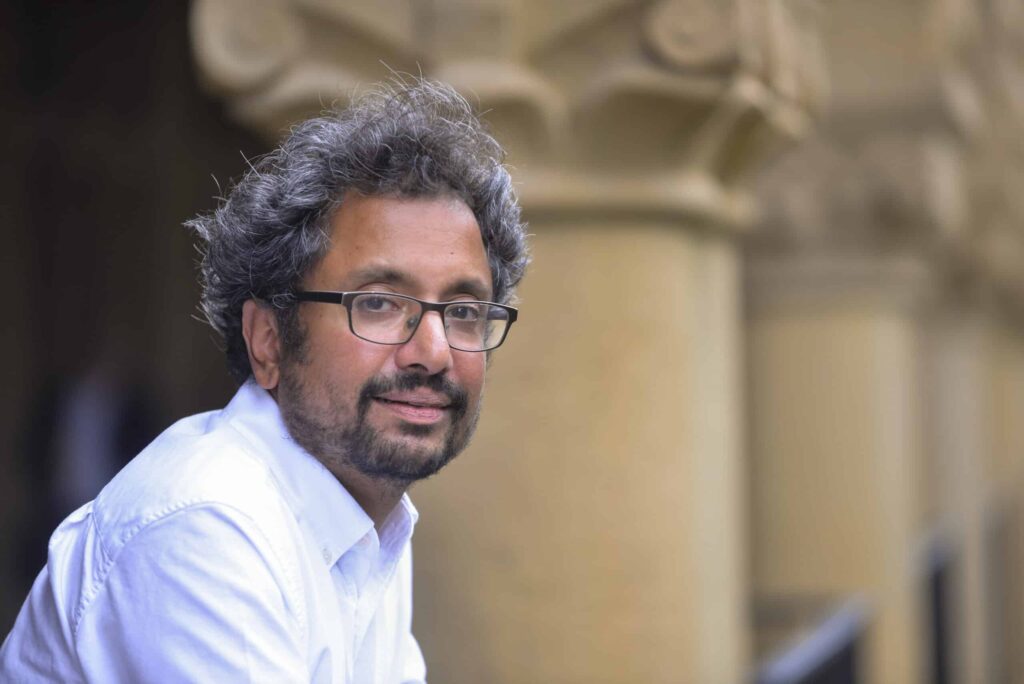
Sometimes, a personal experience provides a special insight into an issue. Such is the case in this response to the question “What are the skills and mindset unique to those who succeed in the Putnam competition?”.
In 1993, I was serving as a trustee for the Sam Beatty Mathematical Foundation at the University of Toronto, when I met our newest trustee, Ravi Vakil. He had recently graduated from the University of Toronto with its most prestigious award, the Governor General’s Medal for the highest graduating marks at that university and had been accepted in the Ph.D. program at Harvard. Vakil’s resumé read like a dictionary of superlatives. During his high school years he won every major mathematics competition, including first place standing in the Canadian Mathematical Olympiad for two successive years, first place standing in North America on the USA Mathematical Olympiad, and two gold medals and one silver medal in the International Mathematical Olympiad (including a perfect score). He also won first prize in the Canadian Association of Physicists Competition and led his high school computer team to three Ontario championships.
During his undergraduate years at the University of Toronto, Ravi raised his brilliant achievements to new heights. In all four years he placed among the top five competitors in the prestigious North American William Lowell Putnam Mathematical Competition, earning him the top award of Putnam Fellow in each year. Since its inception in 1938, only 8 competitors have been able to achieve this amazing feat. His stellar performance prompted the San Francisco Chronicle to describe him as “a legend in the world of math competitions.”
When I met Ravi, I had been planning to write a book on problem solving to help young people develop problem solving skills and prepare for mathematics competitions. After learning of Ravi’s accomplishments, it was immediately obvious that he should be the author. I approached him with the suggestion that if he shared his insights on problem solving, I would edit and publish it.
Although heavily committed to his doctoral research, Ravi accepted the challenge. We had an initial meeting that was both exhilarating and exhausting. Ravi exploded with ideas, struggling to verbalize his ideas as quickly as they emerged in his mind. When I came to Boston for a mathematics conference in April 1995, I visited Ravi at Harvard and he handed me the first draft of his manuscript. It was creative, cordial and yet meticulous in detail. During the next six months, a series of exchanges culminated in A Mathematical Mosaic: Patterns & Problem Solving that was soon to become a seminal publication in the field of mathematical problem solving. (A new updated edition was released in 2008 and it continues to be used by many high schools and universities as a resource for their mathematics competitions.) Ravi received his Ph.D. in pure mathematics at Harvard in 1997, and subsequently taught at Princeton and M.I.T. before moving to Stanford in 2001. He continues his work as a professor of mathematics at Stanford and as one of the world’s leading researchers in algebraic geometry, is the recipient of many prestigious awards. Ravi Vakil is currently the President of the American Mathematical Society.
But is a single example representative of the typical skills and mindset that characterize winners of the Putnam competition? Many of the mathematics or physics superstars who have won a Fields medal or a Nobel Prize first appeared on the horizon of intellectual promise as winners of the William Lowell Putnam competition. This competition is the Super Bowl of intellectual prowess at the collegiate level. Among the winners of Putnam competitions are some of the celebrated icons of the mathematics and physics world. Included in this pantheon are Fields Medalists John Milnor (1962), Paul Cohen (1966), who proved the undecidability of the continuum hypothesis, John G. Thompson (1970), David Mumford (1974), and Daniel Quillen (1978). Physics Nobel Laureates who have received Honorable Mention or better were Richard Feynman, a Putnam Fellow in 1939, Kenneth G. Wilson, a two-time Putnam Fellow, Steven Weinberg, and Murray Gell-Mann. The Nobel Prize winner in Economics, John Nash, made famous in the movie A Beautiful Mind, finished in the top ten of 147 individuals in 1947.
Many winners of math olympiads go on to perform at the highest level as mathematics or physics researchers. However, many do not. Conversely, some who do not perform exceptionally in mathematics competitions, rise to the highest levels of achievement in their research. The kinds of deep discoveries made by Archimedes, Einstein, and Gödel, clearly require time for incubation, and reflection that is not available in mathematical competitions. However, there are those who excel in both olympiads and in mathematical research and no one defines this category more dramatically than the Russian mathematician Grigory Perelman. The takeaway message for this long description is that those who rise to the top of the Putnam Competition are a rare breed with special talent. Of course, there are also equally brilliant people who do not excel in these competitions, but they too are also innately gifted. So a person without innate problem-solving talent, cannot reach the highest echelons by merely working harder. The gifted people are already working as hard as possible.
